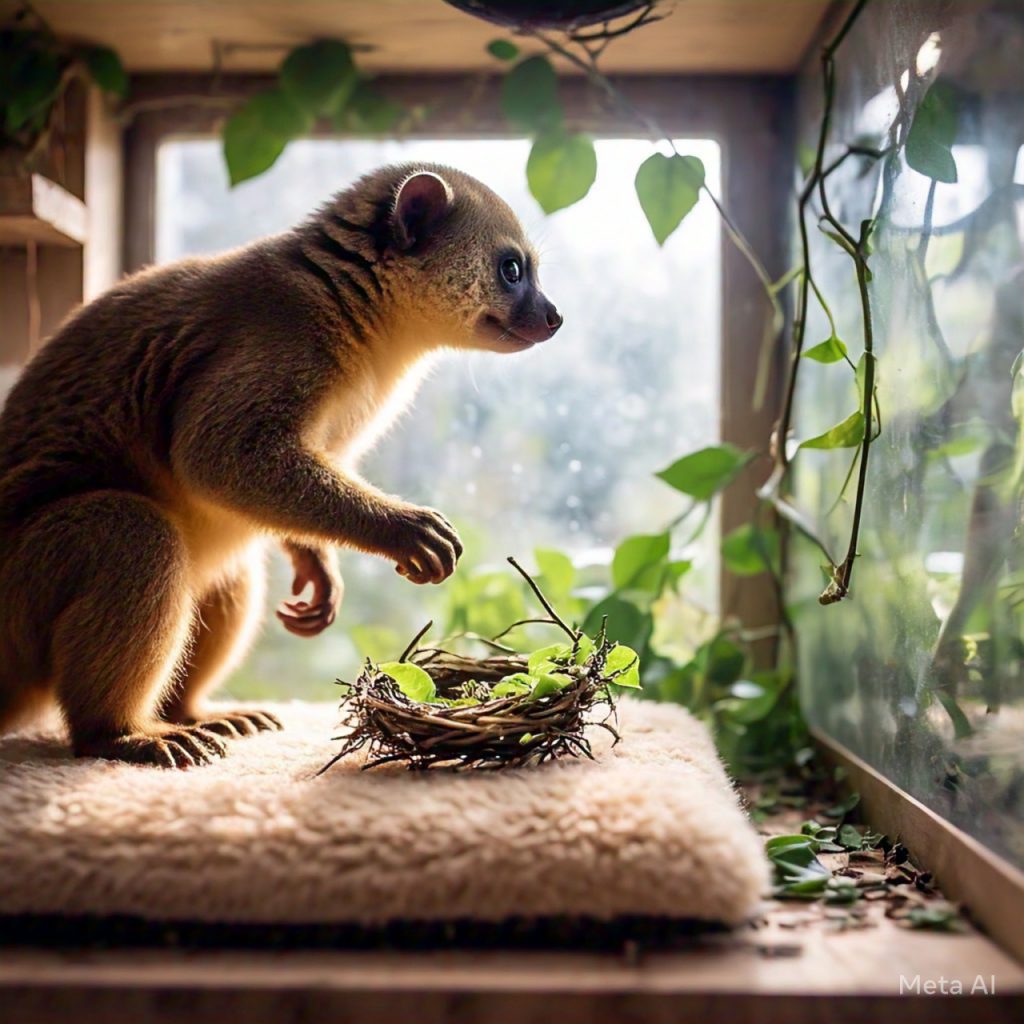The exotic pet trade is a unique and lucrative industry, and kinkajou breeding offers an exciting opportunity for animal enthusiasts and entrepreneurs. These small, nocturnal mammals, often referred to as “honey bears,” are native to Central and South America. With their playful demeanor and manageable size, kinkajous are increasingly popular among exotic pet lovers. However, breeding kinkajous successfully requires in-depth knowledge, meticulous planning, and adherence to legal and ethical standards. This comprehensive guide will explore how to establish a thriving kinkajou breeding business.
Understanding Kinkajous
Before delving into breeding, it’s essential to understand the species.
- Physical Characteristics: Kinkajous are small mammals with a prehensile tail, large eyes adapted for nocturnal life, and soft, dense fur. They typically weigh 3-10 pounds and live 20-30 years in captivity.
- Behavior: These animals are arboreal and highly active at night. They’re known for their social and playful nature, making them appealing as exotic pets.
- Diet: Kinkajous are frugivores, feeding primarily on fruits, nectar, and occasional insects. A balanced diet is critical for their health and reproductive success.
Market Research and Demand
Conducting thorough market research is key to a successful business.
- Target Audience: Identify potential buyers, including exotic pet enthusiasts, zoos, and wildlife educators.
- Market Trends: Analyze trends in the exotic pet trade. Is the demand for kinkajous increasing? What are buyers willing to pay?
- Competition: Study existing breeders. Understand their pricing, marketing strategies, and customer reviews.
Legal Considerations
Compliance with legal regulations is crucial in the exotic pet trade.
- Licensing: Obtain the necessary permits, such as USDA licenses, for breeding and selling exotic animals.
- State and Local Laws: Familiarize yourself with laws regarding the ownership and sale of kinkajous. Some states may prohibit or restrict their sale.
- International Trade: If you plan to sell internationally, adhere to CITES regulations (Convention on International Trade in Endangered Species).
Setting Up Your Facility
A well-designed facility ensures the health and well-being of your animals.
- Enclosures:
- Spacious and escape-proof cages with climbing structures and hiding spots.
- Temperature control to mimic their natural habitat (70-85°F).
- Regular cleaning to maintain hygiene.
- Breeding Pairs:
- Select healthy, genetically diverse pairs. Avoid inbreeding to prevent genetic defects.
- Establish a quarantine protocol for new animals to prevent disease introduction.
- Veterinary Care:
- Partner with a vet experienced in exotic animals.
- Schedule regular health checks and vaccinations.
Breeding Kinkajous
Successful breeding involves careful attention to the animals’ reproductive cycles and well-being.
- Reproductive Cycle: Female kinkajous reach sexual maturity at 18-24 months, while males mature slightly earlier. Breeding pairs should be introduced gradually to minimize stress.
- Gestation and Birth: The gestation period is about 112-118 days, and litters typically consist of one or two offspring. Provide a quiet, safe space for birthing and rearing.
- Neonatal Care: Baby kinkajous, known as “kits,” require close monitoring. Ensure they are nursing and gaining weight appropriately.
Feeding and Nutrition
Nutrition plays a vital role in the health of breeding pairs and offspring.
- Diet Plan:
- Offer a variety of fresh fruits (bananas, mangoes, papayas) and high-quality protein sources like boiled eggs.
- Supplement with a commercial exotic mammal diet and calcium to prevent deficiencies.
- Hydration: Ensure constant access to clean water.
Marketing and Sales
Building a strong brand and reaching the right audience is key to profitability.
- Brand Identity:
- Develop a professional website showcasing your animals, facilities, and expertise.
- Emphasize your commitment to animal welfare and ethical breeding practices.
- Social Media:
- Use platforms like Instagram, TikTok, and Facebook to share photos, videos, and educational content about kinkajous.
- Engage with potential buyers by answering questions and offering advice.
- Networking:
- Attend exotic pet trade shows and conferences to connect with buyers and other breeders.
- Collaborate with wildlife organizations to enhance your credibility.
Challenges and Solutions
- Health Issues:
- Common problems include obesity, dental issues, and parasitic infections. Preventive care and a proper diet are essential.
- Regulatory Changes:
- Stay informed about legal changes that could impact your business. Join industry associations for updates and advocacy.
- Customer Education:
- Many buyers are unaware of the commitment involved in owning a kinkajou. Provide detailed care guides to ensure successful adoptions.
Building a Sustainable Business
- Ethical Breeding: Avoid overbreeding and prioritize the well-being of your animals.
- Reinvestment: Allocate profits toward improving facilities, expanding operations, and marketing.
- Customer Relationships: Maintain contact with buyers to offer support and build a positive reputation.
Conclusion
Kinkajou breeding is a rewarding venture for those passionate about exotic animals. By prioritizing animal welfare, adhering to legal standards, and implementing effective marketing strategies, you can build a successful business in the exotic pet trade. As with any venture, continuous learning and adaptability are key to long-term success.

